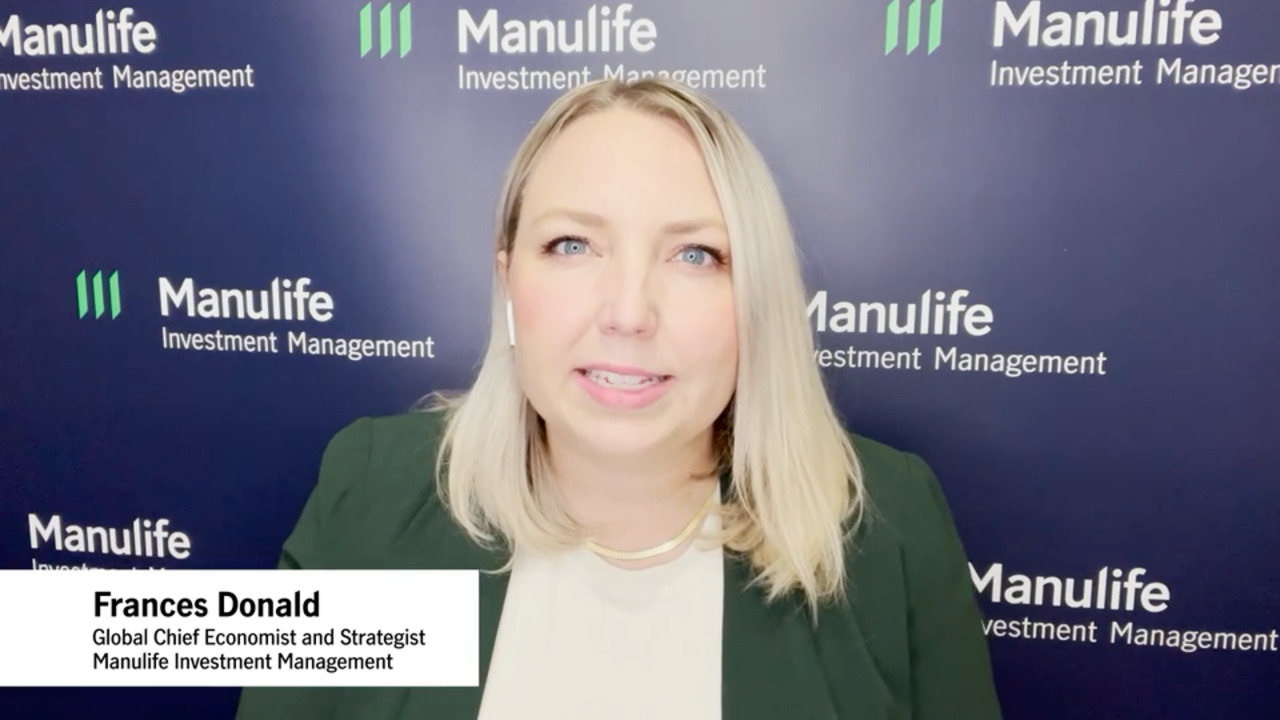
October 5, 2023


U.S. economic outlook
Recessions are more than just a number: an investment framework
The idea that a U.S. recession could be imminent is likely to spark anxiety among investors. We highlight five considerations that investors should pay attention to.

Hopes for a soft landing may be growing, but we continue to believe that the U.S. economy will slip into a mild to moderate recession within the next six months. Simply put, we expect to see two consecutive quarters of negative GDP growth, accompanied by a rise in the unemployment rate.
Instinct might suggest this classifies as out-and-out bad news for investors, but we think it’s worth questioning whether that’s necessarily true or does it have more to do with how we’re conditioned to viewing the economy through binary lenses: growth (good) versus recession (bad)? As long-term investors, we think this “recession or no recession?” framing is unhelpful at best and, at worst, can stand in the way of investment returns. Instead, a more thoughtful approach is needed.
In the coming months, we believe the consensus view in the market will revert back to a U.S. recession being a base case. Once that dreaded word comes back into play, investors should assess those newly downbeat forecasts through the lens of five core considerations that we believe hold more meaningful investment implications than GDP forecasts alone.
Whether or not economic activity has contracted to the extent that it fits the official definition of recession is much less important than the decline in growth momentum that lies ahead. In our view, lending, consumer activity, capital investment, and, among other things, earnings will weaken in the coming six months. These developments are likely to be far more relevant to investors than the mathematical computation of a lagging economic indicator. While it’s a plausible alternative case that the math works out and we narrowly escape the technical definition of a recession, the difference between, let’s say, for example, a 0.2% contraction and 0.1% GDP growth is unlikely to register with investors. In fact, we believe the latter scenario will also represent a more difficult environment for risk assets.


The U.S. and global economies are currently heavily desynchronized across a range of factors. Crucially, the U.S. (and global) manufacturing and services sectors are running on separate cycles in a way that could see U.S. manufacturing recover even as the services sector weakens in the next six months. This environment could lead to sector- and company-specific opportunities even as the broader economic environment deteriorates.

We believe that the labor shortage is a structural issue that will continue to pose an important challenge to businesses even as recession risk rises. While it won’t necessarily prevent higher unemployment rates in the coming year, labor hoarding may become more commonplace, which could mean a less pronounced rise in the unemployment rate than in past recessions.

It’s worth underscoring that we’re operating in an environment defined by heightened geopolitical risk, pronounced supply-side-driven inflation, and more frequent and severe weather events. From an academic point of view, there’s no doubt in our minds that these factors will distort and test our understanding of recessions.
In our view, a recession in the coming months may not be the worst-case outcome for investors. Consider a standard recession scenario: growth declines, central banks cut interest rates, leading to a sizable recovery in growth. For most medium- to long-term investors, the pain is typically most acute in the near term while the opportunities could translate into gains in the longer term across asset classes. The alternate soft-landing scenario that we keep hearing about—one in which growth slows but not in a material way—may at first glance seem less negative, but could produce a more challenging investing environment in which growth declines while central banks continue to hang on to their hawkish bias. In such a scenario, growth’s likely to stagnate and a meaningful economic rebound is unlikely to materialize. In our view, an environment where the economy manages to dodge a recession but gets stuck in a prolonged period of <1% growth could well be more challenging to investors.
Finally, investors' investment horizon makes a material difference in how they should handle a recession. While we spend a lot of time examining recession risk, we devote just as much time thinking about what the postrecession rebound might look like. We believe that the longer-term outlook is one characterized by higher-quality growth, slightly higher inflation, and interest rates that are higher than what we’ve gotten used to in the post-global financial crisis environment. From an asset allocator’s perspective, it’s fair to say this typically translates into a bullish medium- to long-term investment outlook.

Global Chief Economist and Strategist
Co-Head, Global Macro Strategy

October 5, 2023

September 11, 2023

April 5, 2023
Investing involves risks, including the potential loss of principal. Financial markets are volatile and can fluctuate significantly in response to company, industry, political, regulatory, market, or economic developments. The information provided does not take into account the suitability, investment objectives, financial situation, or particular needs of any specific person.
All overviews and commentary are intended to be general in nature and for current interest. While helpful, these overviews are no substitute for professional tax, investment, or legal advice. Clients and prospects should seek professional advice for their particular situation. Neither Manulife Investment Management, nor any of our affiliates or representatives (collectively Manulife Investment Management) is providing tax, investment, or legal advice.
This material is intended for the exclusive use of recipients in jurisdictions who are allowed to receive the material under their applicable law. The opinions expressed are those of the author(s) and are subject to change without notice. Our investment teams may hold different views and make different investment decisions. These opinions may not necessarily reflect the views of Manulife Investment Management. The information and/or analysis contained in this material has been compiled or arrived at from sources believed to be reliable, but Manulife Investment Management does not make any representation as to their accuracy, correctness, usefulness, or completeness and does not accept liability for any loss arising from the use of the information and/or analysis contained. The information in this material may contain projections or other forward-looking statements regarding future events, targets, management discipline, or other expectations, and is only current as of the date indicated. The information in this document, including statements concerning financial market trends, are based on current market conditions, which will fluctuate and may be superseded by subsequent market events or for other reasons. Manulife Investment Management disclaims any responsibility to update such information.
Manulife Investment Management shall not assume any liability or responsibility for any direct or indirect loss or damage or any other consequence of any person acting or not acting in reliance on the information contained here. This material was prepared solely for informational purposes, does not constitute a recommendation, professional advice, an offer or an invitation by or on behalf of Manulife Investment Management to any person to buy or sell any security or adopt any investment approach, and is no indication of trading intent in any fund or account managed by Manulife Investment Management. No investment strategy or risk management technique can guarantee returns or eliminate risk in any market environment. Diversification or asset allocation does not guarantee a profit or protect against the risk of loss in any market. Unless otherwise specified, all data is sourced from Manulife Investment Management. Past performance does not guarantee future results.
This material has not been reviewed by, and is not registered with, any securities or other regulatory authority, and may, where appropriate, be distributed by Manulife Investment Management and our subsidiaries and affiliates, which includes the John Hancock Investment Management brand.
Manulife, Manulife Investment Management, Stylized M Design, and Manulife Investment Management & Stylized M Design are trademarks of The Manufacturers Life Insurance Company and are used by it, and by its affiliates under license.
3162049